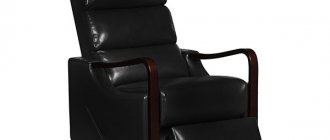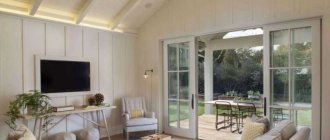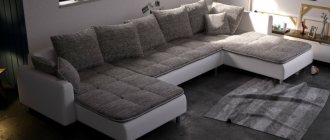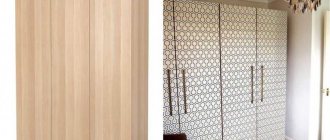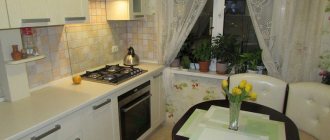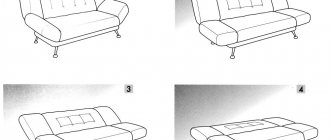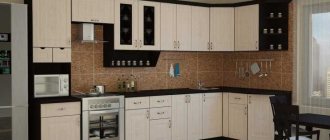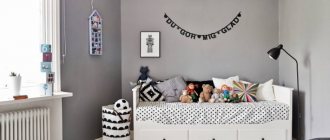The window will not solve the problem
The air in the kitchen especially needs to be cleaned. During the cooking process, the entire apartment is filled with odors. And if suddenly something burns in a frying pan, then smoke is added to the smells.
In addition, during the cooking process the air humidity in the room increases significantly. This leads to dampness, a favorable environment for the development of fungus and mold.
To avoid these consequences, good ventilation is needed. Simple ventilation with a window is not enough.
The ideal solution in this case is kitchen exhaust units.
Advantages
When you cook, you may notice that then the whole apartment smells like what you cooked. And if the food is burnt, the burning smell does not leave the room for a long time. Fume hoods are designed specifically to ensure that your apartment remains clean and free of any foreign odors. The hood is installed directly above the stove or hob. If necessary, you turn on the hood and it sucks out all the unpleasant odors and smoke.
The hood also serves as additional ventilation in your kitchen, where the windows constantly sweat and the humidity is always high. A large number of manufacturers, both Russian and foreign, allow you to choose a hood that will suit any type of kitchen and furniture of any size. Many modern hoods are equipped with a timer that will make the hood turn off after a certain period of time.
A fume hood often serves as additional storage space for spices, cereals and small kitchen utensils.
Preliminary calculations
Before choosing the best hood option, you need to make some calculations.
This takes into account the size of the room, the presence or absence of access to a stationary exhaust well. Of course, the design and size of the equipment is important.
Careful selection of the width of the hood is very important. The slightest gap between this device and the cabinet will ruin the appearance of the entire kitchen ensemble.
Multiple mounting options
A hood that is built into the countertop costs slightly more than other options. However, its installation is not as simple as its analogues. The advantageous aspect of this system is its silent operation. Odor removal with this installation occurs with one hundred percent efficiency.
For small apartments, a fully built-in hood is most suitable. This is where anyone who can’t decide for a long time which is better to choose a built-in hood should opt for.
Almost its entire structure is placed in a cabinet, while the working part protrudes from it as an almost invisible plate. Many models of this type are mounted directly into the ceiling, but this option is not suitable in high kitchens, since the hood simply cannot fully pump out food odors.
Which hood is better to choose for the kitchen?
The range of equipment in trade organizations is presented in a wide range. Hoods 50 cm or more in all sorts of colors, designs, features and types make you wonder: how to choose the best option?
The design of a hood in the interior of a modern kitchen, ideas and layout options can be found on the Internet before making a final decision.
Note!
U-shaped kitchen: pros and cons of the U-shaped layout. Methods of arranging furniture, dividing into working and dining areas. Photos and videos of design ideas- Kitchen facades: TOP 180 photos and video reviews of kitchen facades. Types of frames, criteria for choosing materials and color solutions
- Short curtains for the kitchen - features of using short curtains in small and large kitchens. Advantages and disadvantages of fabric materials (photo + video)
And only then decide which type of device is more suitable for your premises - a recirculation or flow-through option. What is the difference?
Exhaust power. Which one will be enough?
Despite the fact that the hood has to deal mainly with the air above the stove, its power is calculated taking into account the total volume of the room. The larger the room, the more powerful the model will be required.
Note!
Yogurt maker - choice of varieties, pros and cons of use. The best photo reviews of models with descriptions of optionsThe best electric kettles - types of functions and differences between kettle models. Reviews of popular manufacturers + 140 photos
- Electric hob: TOP-110 photos of the best models. Advantages and disadvantages of use + tips for choosing
On the Internet you can find more than one calculator for calculating the power of a hood, but most of them work according to the same formula: the width of the kitchen is multiplied by the height and width - this is how the volume is found.
Then, the found volume value is multiplied by 12, as a result of which the minimum required exhaust power for a given volume (cubes/hour) is obtained.
Standard capacity models of 1020, 851 and 702 cubic meters/hour are available on the market. You should choose a power that is greater than that obtained in the calculations.
Recirculation hood
The principle of its operation is that the device sucks air from the kitchen, passes it through a filter and releases it back into the room.
Thus, foreign odors and fumes are neutralized by passing through a carbon filter during circulation.
Along with the filter device, the hood mechanism also includes a grease trap.
How to choose a cabinet for a hood
To choose a cabinet for a built-in hood, it is important to determine not only its parameters, but also take into account the characteristics of the equipment:
- device type;
- dimensions;
- façade design;
- opening system;
- filling.
What to choose first – hood or cabinet
Due to the fact that hoods are available in a wide range of sizes, it is wiser to first purchase or order a kitchen set. It is important to take careful measurements of the cabinet in which the equipment will be installed, and only after that go to the store. In turn, the wall cabinet should not differ much in size from the hob. A device that is too small will not be able to cope with high-quality air purification.
If the width of the hood exceeds the parameters of the cabinet, you cannot do without the help of furniture makers. Only specialists can change the design of adjacent modules without disturbing the fastenings and movement of the sashes.
The deviation to the smaller side is not so bad, which will allow you to install the device yourself.
An important point is the height of the catching system. For gas stoves, the optimal value is 75 cm, for electric stoves - 65 cm. Increasing the recommended tolerances reduces the efficiency of the unit.
Types of built-in hoods
Hoods combined with a cabinet can be stationary or telescopic.
- The stationary model is completely hidden in the furniture. Only the work surface, equipped with filters and lighting, remains outside.
- The telescopic modification is more expensive, but its efficiency is higher. The moving element moves forward when the device is turned on, thereby increasing the working surface. At the end of the work, the module returns to its original place. When cooking on two distant burners, it does not need to be pulled out. Due to the design features, the end part of the device remains visible, so the front of the cabinet is slightly raised compared to the other elements of the set.
Typical sizes
The wall cabinet for the hood can have a straight or corner design.
The first type is used most often and is a rectangular module. If the stove is installed in a corner, then the exhaust device will have to be mounted in a product of a similar configuration. Kitchens with a corner location allow you to wisely manage the space and save more free space for the dining area.
The dimensional parameters of the lockers are within the limits:
- width 50-120 cm;
- depth not less than 30 cm, not more than 60 cm;
- height from 50 to 80 cm.
Cabinet interior
As elements of the storage system, the cabinet for the hood is supplemented with shelves inside. Their number depends on the height of the product. In low models, one horizontal partition is installed, in high models - two.
Some products contain retractable elements that are much more convenient to use, special stands for dishes, etc.
In this case, all parts of the exhaust system must be separated by walls.
In some modules, along with closed compartments, there are open shelves. They are convenient for holding decorative items or things that are constantly used.
Advantages and disadvantages
Such hoods are usually used in houses with a faulty general ventilation system, or if it is designed for low draft.
Note!
- Water filter for the kitchen: functions and benefits of a water filter in the kitchen. Types of filters and mechanisms, their pros and cons (photo + video)
Kitchen in high-tech style: 135 photos and video master class on organizing space and design
Kitchen in modern style - 160 photos of the best design options and features of the style
The advantages are that there is no need to extend air exhaust hoses to the device; it can be installed in a tabletop or mounted in a false ceiling.
In addition, in this case, you can place the stove in the kitchen without taking into account the location of the common ventilation pipe.
The disadvantages include the need to periodically replace consumables and regularly clean the grease filter. The device does not provide fresh air from the street or other rooms.
It is useless to install such a hood over a gas stove. The carbon monoxide that it will absorb, passing through the filters, will again be released into the room. This is where recycling can be harmful to health.
Hood installation
When purchasing a kitchen set, you should immediately consider the option of installing a built-in 60 cm hood, which will be the best option for most sets. This will allow you to immediately adjust the overall design of the furniture to your needs.
The device will be easier to install and you won’t have to worry about where to place it, it will already have a specific place.
Many models are equipped with retractable panels that are used only during work, and when not needed, the hood is practically invisible.
You should also pay attention to the height between the stove and the hood. The most optimal values will be 70 cm for an electric panel and 80 cm for a gas panel.
When installing a hood, you can do it yourself, it is not necessary to invite specialists. If the model does not provide for the installation of an air duct, then any owner can handle this task.
It is important to take into account that when installing inside a cabinet, you will need to ensure that the retractable panel has free, easy movement. A 60 cm hood is not so difficult to hide in a wall cabinet. This piece of furniture can vary between 60 - 80 cm.
It is very important, if you are choosing a hood not for yourself, but, say, for your parents, to make sure that it is easy to operate, ask what color will look best for them and find out what degree of illumination will be optimal.
If there are children at home, then it is necessary to take into account that many hoods have a function of periodic activation to filter the air. If the device is too noisy, unexpected activation may frighten the child.
Advantages and disadvantages
The advantages of flow-through hoods: high power, no consumables, lower noise level than recirculation types.
Disadvantages include the removal of warm air from the room in winter and additional costs for installing ventilation hoses.
Noise level
Some noise during air purification is normal for an extractor hood. But previously the equipment worked too noisily, and this could create considerable discomfort for the owner. Now manufacturers offer a lot of optimal solutions - effective sound absorption and noise reduction technologies. Therefore, standard built-in models will in any case be quite quiet, even at high suction speeds. At minimum power, the average noise level for built-in hoods is up to 35 dB.
Functional and beautiful
A kitchen hood in the interior of a modern apartment not only fulfills its technical role, but is also one of the design elements.
It is important to fit the device harmoniously into the kitchen space. Especially if the hood dimensions are 90 cm or more. There are different types depending on the location of installation.
The importance of a cabinet for a built-in hood in a kitchen interior
A cabinet for a built-in hood is the top element of a kitchen unit, designed specifically for installing an exhaust system in it.
It allows you to perform several functions at once:
- disguise the hood, making it an aesthetic piece of furniture;
- complemented by a convenient storage system;
- save space in cramped kitchens.
As a rule, such a module is located above the hob and is designed to match the overall style of the kitchen unit. If necessary, it can be purchased separately.
Dome hoods
They are also called fireplace ones. Highly productive, come in many types of designs. There are wall, corner and island options. The latter is attached to the ceiling.
This design pays off in spacious kitchens, when the stove is installed not against the wall, but in the middle of the room.
Kitchen hood – what is it for?
Someone can be sure for a long time that this item is completely unnecessary. However, you need to understand the benefits of such devices in kitchens:
- During the cooking process, as a rule, combustion products and various fumes are released that are very harmful to the human body. This situation is relevant in the case of a gas stove that emits carbon dioxide. Well, an electric stove also emits a lot of contaminants, especially grease and soot. But they definitely need to be removed, not to mention filtered, which kitchen hoods do very well.
- There is also an aesthetic nuance. This applies to smells. After all, not all products have wonderful aromas during their preparation. For example, there is a rather specific smell of fish, which, on top of everything else, “loves to eat into” everything it can. And even more so, the issue of odors is relevant for pregnant women.
In fact, there is a lot to be said about the toxic period. One of its frequent and widespread manifestations is intolerance to certain odors. And it’s very difficult to get rid of them all at once in kitchens. This is why a built-in kitchen hood is a must!
Fumes, fats, soot - all this is typical for kitchens, settling on everything possible: walls, ceiling, floor, furniture and so on. You can wash some interior items, equipment or dishes, even with a lot of effort, but with walls and ceilings - everything is much more serious. After a few years, they will completely lose their original appearance, and you will simply have to renovate the kitchen space again. We will tell you how to choose a hood, of course, but it is a must in every kitchen!
Photo of kitchen hoods
Hood control
"On the buttons"
It so happened that this type of panel control for built-in hoods and other types appeared the very first. It's very easy to understand. After all, each button corresponds to a specific function of the unit. There is one and the most basic drawback in them. If you don't wash the buttons at least from time to time, they may start to stick. After all, dirt and grease will also stick to them.
Control – slider
The basis of control is a slider that moves from one side to the opposite. It can be fixed or smooth.
Sensor
The best hoods for the kitchen are made with touch controls, and sometimes even with remote control! It is also the most modern. Thanks to the touch screen, you can make the necessary settings. The only drawback when working with such panels is that they should not be touched with wet and dirty hands.
